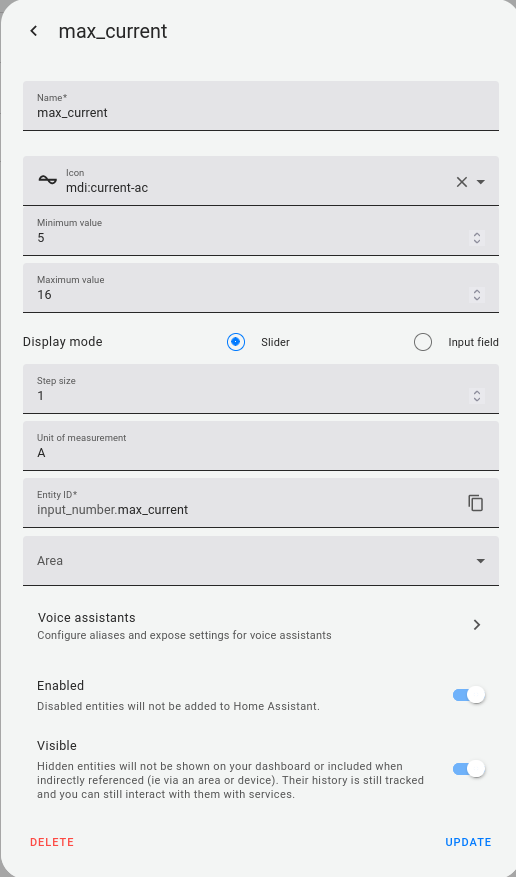1. install diagslave
2. enable modbus and create sensors
vi /config/configuration.yaml///
modbus: !include_dir_merge_list modbus/mkdir -p /config/modbus/
vi /config/modbus/diagslave.yaml#
- name: diagslave
type: tcp
host: 127.0.0.1
port: 502
delay: 0
timeout: 5
sensors:
- name: diagslave_1001
unique_id: diagslave_1001
slave: 1
address: 1001
scan_interval: 5
- name: diagslave_1002
unique_id: diagslave_1002
slave: 1
address: 1002
scan_interval: 5ha core restart3. create max current sliderbar
Settings -> Devices & services -> Helpers -> Number

4. create dashboard
Edit dashboard -> hamburger -> Raw configuration editorviews:
- title: Home
cards:
- type: entities
entities:
- entity: sensor.diagslave_1001
- entity: sensor.diagslave_1002
- entity: input_number.max_current5. create service

|
diagslave is the name as defined in /config/modbus/diagslave.yaml |
6. create automation rule
Services -> Automations & scenes -> + CREATE AUTOMATION -> Create new automationADD TRIGGER -> Entity -> State -> Entity -> max_current
ADD ACTION -> Call service -> Modbus: Write register
-> Address 1001
-> Slave 1
-> Value "{{ states('input_number.max_current') }}"
-> Hub diagslave
SAVEcat /config/automations.yaml- id: '1708906321534'
alias: max_current
description: ''
trigger:
- platform: state
entity_id:
- input_number.max_current
condition: []
action:
- service: modbus.write_register
data:
hub: diagslave
address: 1001
slave: 1
value: '{{ states(''input_number.max_current'') }}'
mode: single